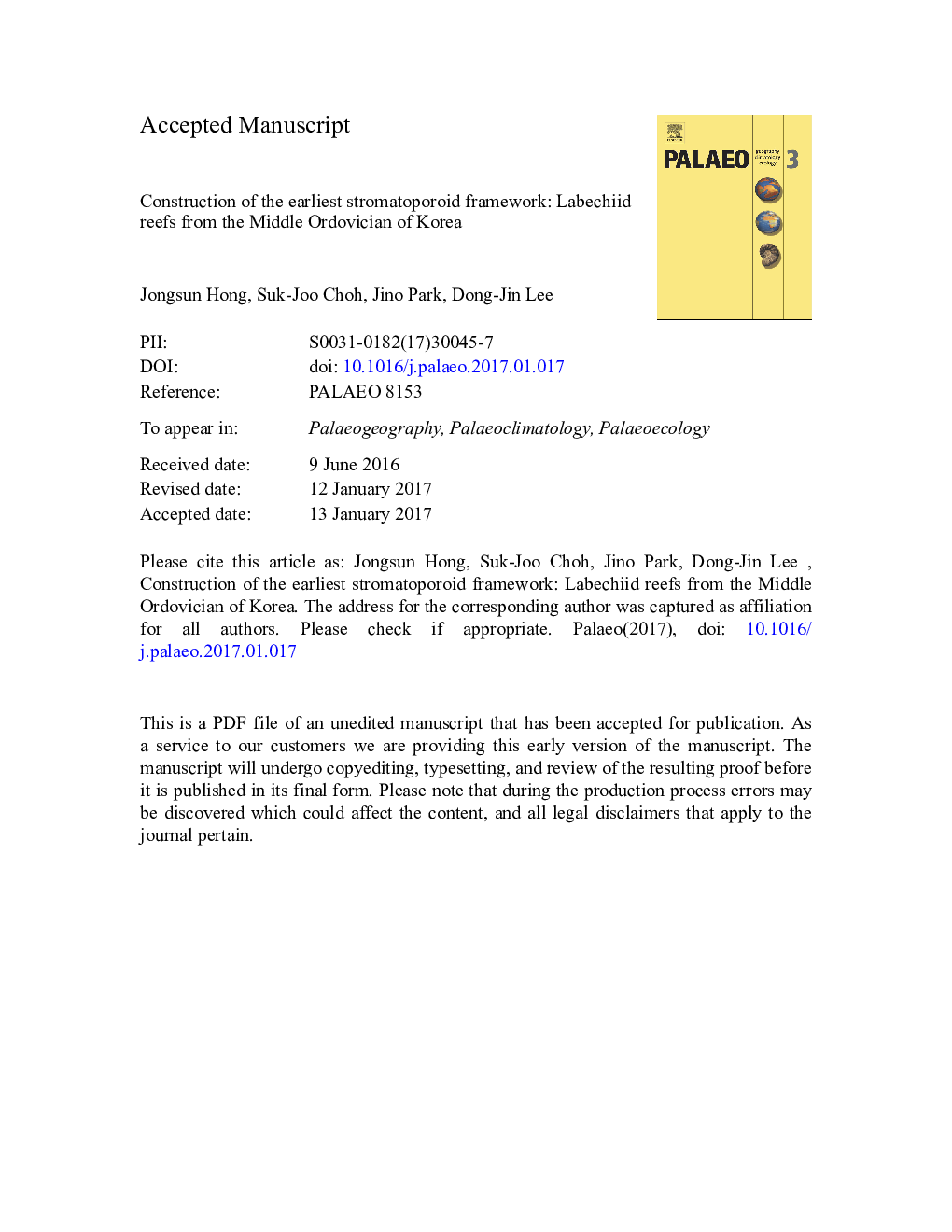| Article ID | Journal | Published Year | Pages | File Type |
|---|---|---|---|---|
| 5755910 | Palaeogeography, Palaeoclimatology, Palaeoecology | 2017 | 33 Pages |
Abstract
The Great Ordovician Biodiversification Event (GOBE) involved a remarkable rise of skeletal reefs during the late Middle Ordovician. A new type of skeletal patch reef built by labechiid stromatoporoids is reported from the Yeongheung Formation (Darriwilian) of the Korean Peninsula, part of the eastern North China Block, a hot-spot for late Middle Ordovician diversification of early labechiids. The attachment of laminar labechiids, subordinate peloidal micritic crusts and spiculate sponges, and minor bryozoans on peloidal-intraclastic packstone to grainstone substrates, and upward growth of these organisms by repeated encrustation, resulted in the construction of centimeter-scale domal tight frame structures. These skeletal frames were in turn veneered by larger labechiids, forming sub-meter-scale laminar skeletal reefs with primary cavities. Such skeletal reefs that formed by the encrustation and binding of labechiid stromatoporoids are analogous to the bindstone frameworks of coeval Laurentian reef mounds and skeletal reefs, though they differ markedly in composition, as is apparent in the absence of tabulate corals and markedly lower contribution of bryozoans, both of which were key elements of the Chazy reefs of Laurentia. The Yeongheung reefs described herein represent some of the oldest labechiid skeletal reefs known to date, and formed mainly by the aggregation of early stromatoporoids prior to the arrival of corals and other robust constructors in the region. This discovery provides new information on the evolutionary trends of early skeletal reefs in response to the appearance of new reef-building organisms and their regional distributions during the Ordovician radiation.
Related Topics
Physical Sciences and Engineering
Earth and Planetary Sciences
Earth-Surface Processes
Authors
Jongsun Hong, Suk-Joo Choh, Jino Park, Dong-Jin Lee,
